Affiliate links on Android Authority may earn us a commission. Learn more.
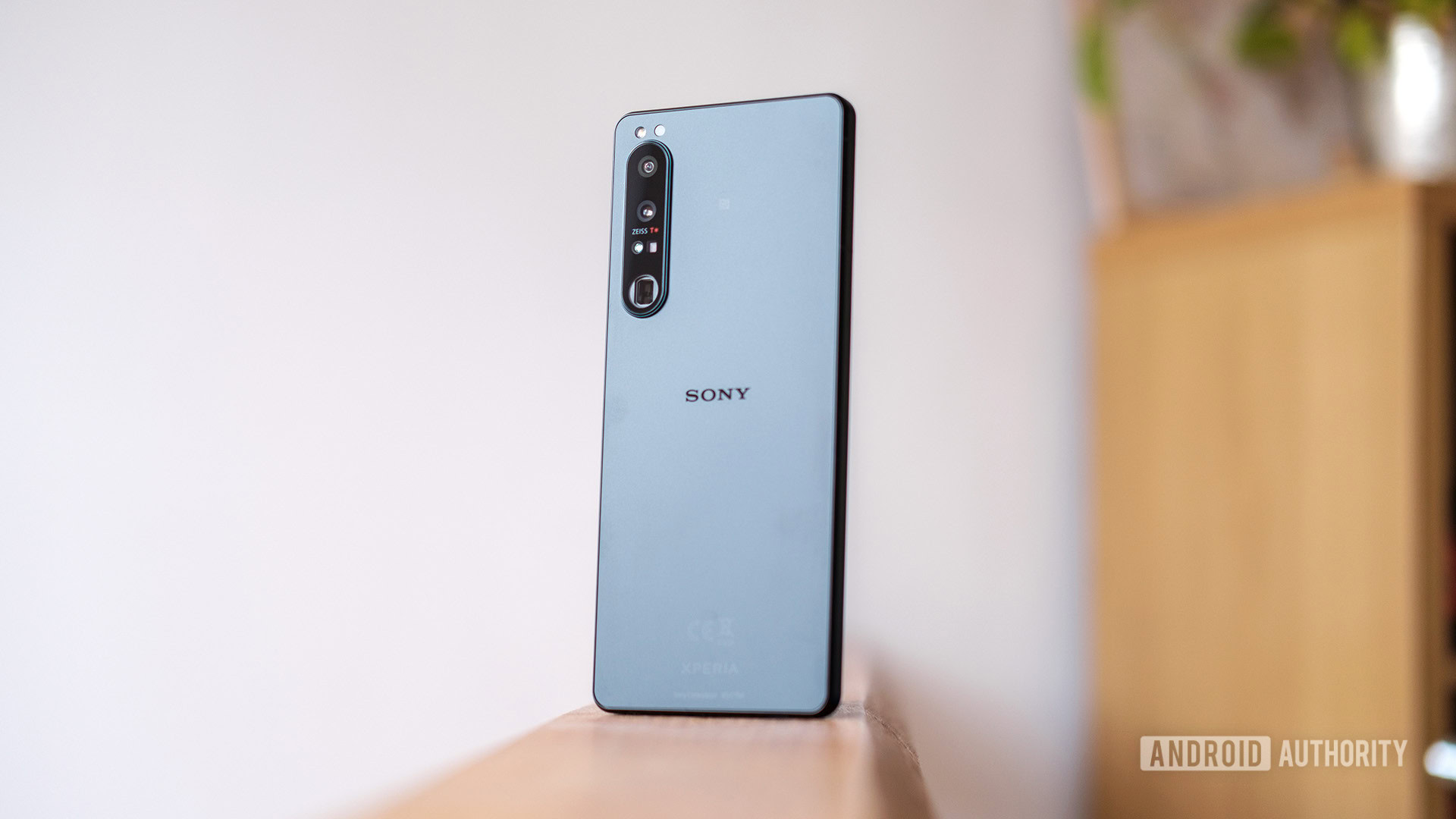


Sony Xperia 1 IV
What we like
What we don't like
Our scores

Sony Xperia 1 IV
2022’s flagship Sony Xperia 1 IV is built for content consumers and creators, whether you’re taking snaps, shooting video, or streaming mobile games to viewers across the globe. But all this technology comes at a cost. The Xperia 1’s third iteration was already super expensive, but the Xperia 1 IV’s $1,600 launch price in the US was outright bonkers.
Thankfully, several months later and with a new model on the market, the handset’s price has been cut to a still very premium $1,399. Will Sony’s patented combination of multimedia software and elite hardware be enough to overcome its expensive price tag? Find out in Android Authority’s Sony Xperia 1 IV review.
Update, June 2023: Included new information on the Xperia 1 V, pricing, competitors, and updates.
What you need to know about the Sony Xperia 1 IV
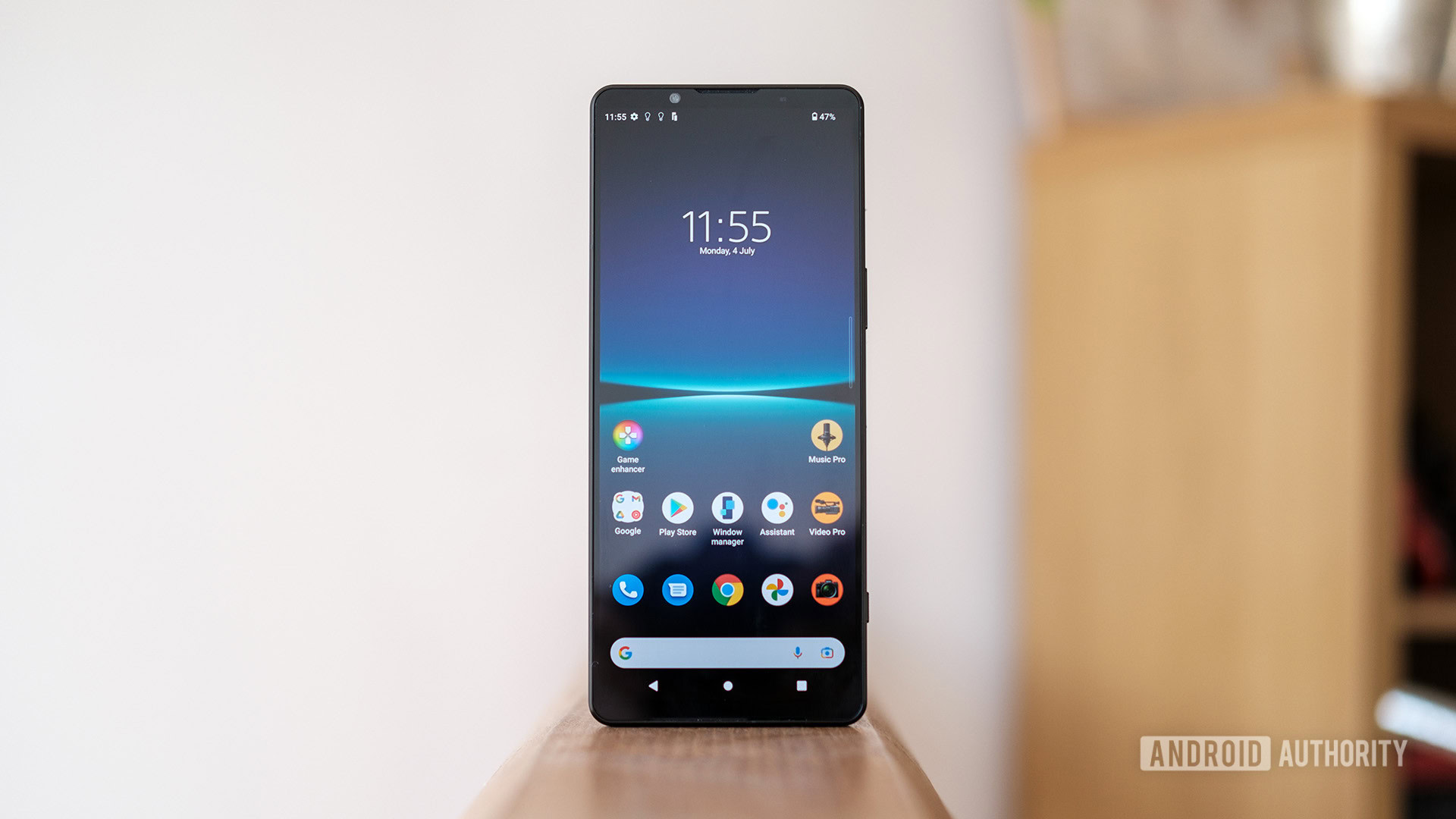
- Sony Xperia 1 IV (12GB/256GB): £1,299 / €1,349 (now £999 / €1,099)
- Sony Xperia 1 IV (12GB/512GB): $1,599 (now $1,399)
The Xperia 1 IV is back with the fourth generation of its premium Xperia 1 line-up. For the most part, the Xperia 1 IV sticks to the same tried and tested formula as the Xperia 1 III and its predecessors. A robust camera, lightweight hardware, and multimedia-oriented features are the phone’s bread and butter. However, the Xperia 1 IV is taking a more robust approach to attract content creators this time, boasting a new variable focal length periscope zoom camera, live streaming support for gaming and video, and a host of Sony Alpha camera supporting features pinched from the ultra-premium, super-niche Xperia Pro-I.
With a Snapdragon 8 Gen 1 processor, 12GB RAM, and 256GB UFS storage in Europe but 512GB in the US, robust performance is also part of the package. However, anyone with a cursory knowledge of the smartphone flagship landscape will know that you can obtain similar, if not improved, specifications at much lower prices. Instead, Sony is banking its value proposition on its exclusive Camera Pro, Video Pro, and new Music Pro apps, all built to empower content creators to make more out of the handset’s hardware than on other smartphones. In the same vein, Sony remains one of the few remaining companies to offer a 3.5mm headphone jack and a microSD card slot in the premium tier.
Sony pulls content creators into focus this generation.
However, it’s not an all-inclusive package. Sony doesn’t include a USB-C cable or charging plug in the box, citing sustainability as the reason. According to Sony, the box is 50% slimmer without plastic components inside and saves 36% CO2 production per unit. It’s happy to sell you a charger for £50/€50, but the phone charges using the widespread USB Power Delivery and PPS standard, so you have your pick of third-party plugs.
The Xperia 1 IV is available in the US, the UK, and Europe. There are three colorways to choose from: Black, Ice White, and Purple, though availability will depend on your region.
In 2023, Sony announced the Xperia 1 V, which features an upgraded processor, new camera capabilities, and a familiar assortment of multimedia capabilities. In the US, pre-orders shipped and general sales started at the end of July 2023.[/alert]
Design: Tried and tested
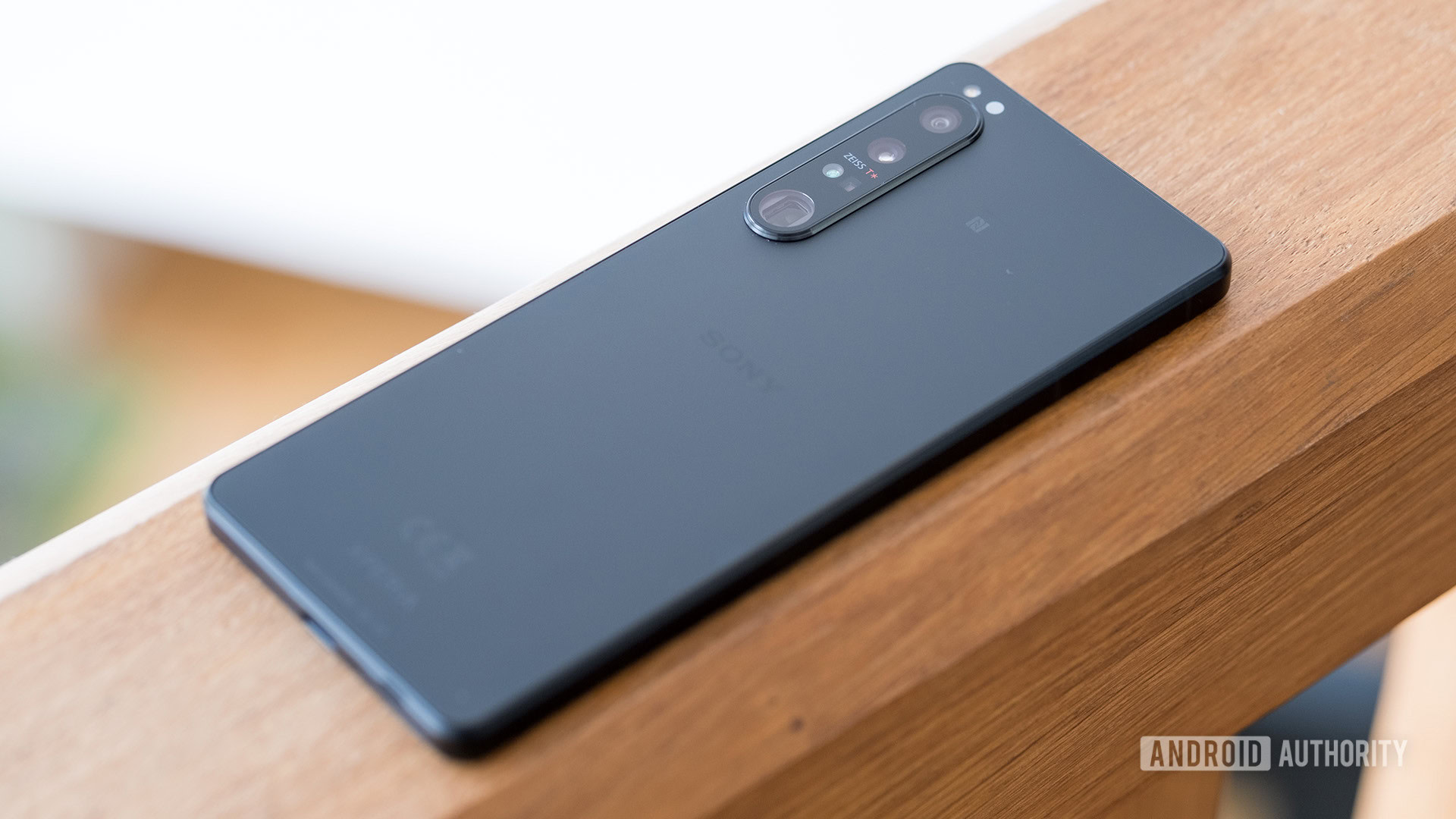
- Gorilla Glass Victus front and back
- 165 x 71 x 8.2 mm
- 185g
- Side-mounted capacitive fingerprint scanner
- IP65/68 rating
- Front-facing stereo speakers
- 3.5mm headphone jack
- Black, Ice White, and purple
If you’ve seen any of Sony’s Xperia 1 handsets before, you’ll know exactly what to expect from the Xperia 1 IV. We’re talking about a matte finish encased in Gorilla Glass Victus on the front and back (not the latest Victus 2 grade). The metal chassis adds an extra premium touch, while the square frame, now with minimized edges for better grip, adds a substantial feel to the handset compared to curved glass models that swamp the market. The matte back is a little bit of a fingerprint magnet, but less so than glossy models.
Staples of Sony’s smartphone design remain intact in its fourth iteration. There’s a 3.5mm headphone jack for wired headphones and a microSD card slot to augment internal storage with up to 1TB more. The side-mounted fingerprint scanner inside the power button remains, in lieu of more modern in-display biometrics or hardware-based face unlocking. The scanner is accurate once setup correctly, but tap-to-unlock times are still on the slow side compared to the fastest options on the market, though it’s not a bad experience overall. Speaking of, the power button can be held with a long press to launch Google Assistant, removing the need for the previous generation’s dedicated button.
The Xperia 1 IV retains a front-facing stereo speaker setup that offers an expanded low-frequency range. Bass is still lackluster on some tracks, as it is with all small smartphone speakers, but it’s better than most, distortion-free, and an improvement on the Xperia 1 III. There’s also more than enough volume on offer. The front-facing setup offers a much better stereo presentation than the bottom-port arrangement popular on many other flagship phones. The overall sound is good to great, but a few tracks sound too mid-heavy to my ears, lacking the treble/presence of rival handsets. I can leave Sony’s Dynamic Vibration bass enhancement — it’s distracting rather than sound-enhancing. Overall though, this is pretty much as good as speakers get on a smartphone.
Despite the additional ports and front-facing speakers, the Xperia 1 IV offers an IP65/68 rating against water and dust resistance. The design remains distinctly Sony’s and while not much has changed in recent years, it’s as good as ever. The black monolith still stands out from the crowd.
Display: Familiar territory
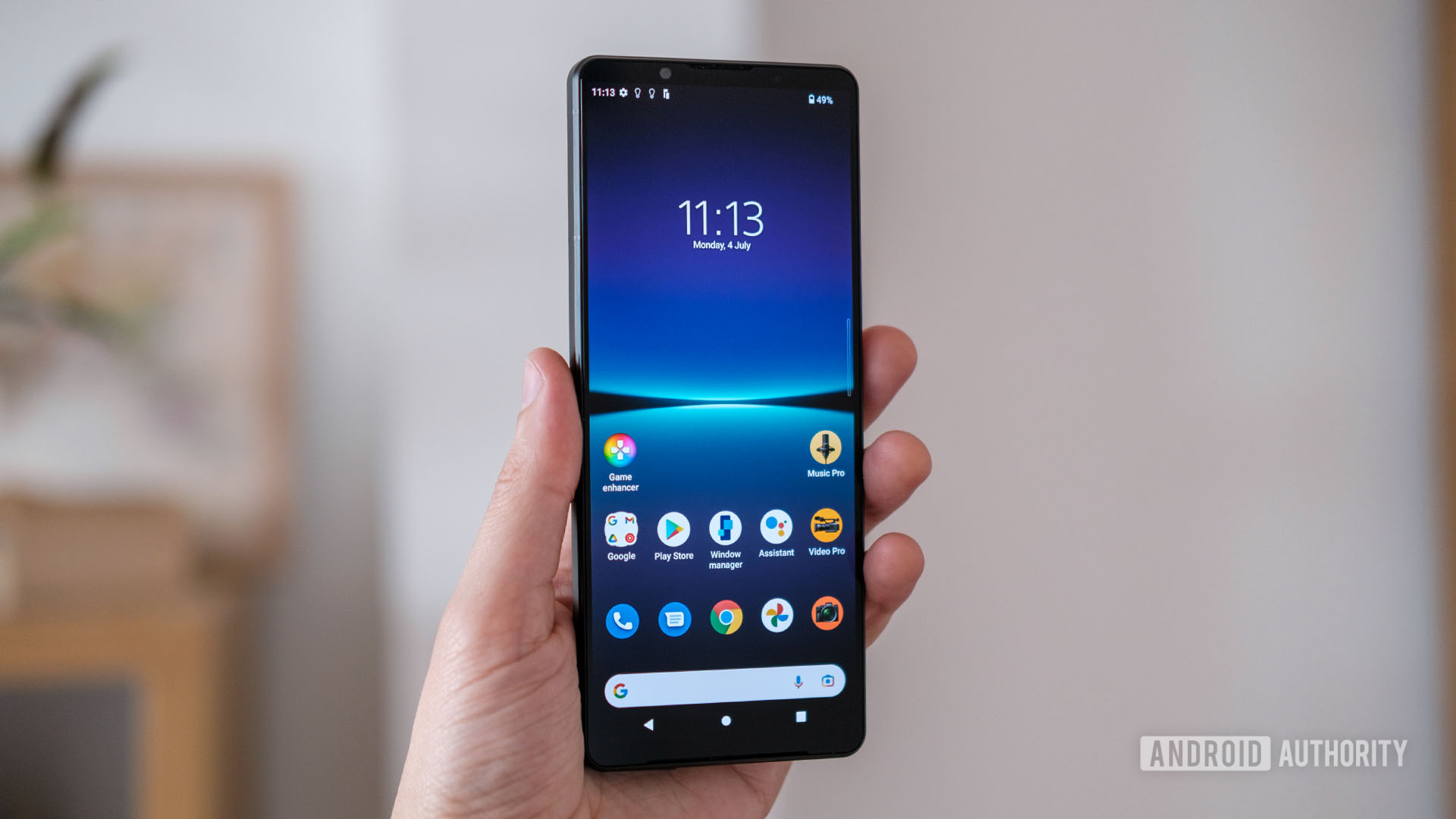
- 6.5-inch 4K HDR OLED
- 3,840 x 1,644 resolution
- 642ppi
- 21:9 aspect ratio, 120Hz refresh rate
Sony’s 4K OLED display looks great, regardless of whether you’re gaming or playing back HDR video. This is definitely one of the nicest-looking displays on the market and Sony’s suite of color and white balance options is there to further tweak the panel to your taste. The only change from the previous generation model is a 50% increase in screen brightness for better outdoor viewing. That’s enough to make a difference in bright outdoor light and plays to Sony’s advanced use cases, such as shooting video or using the phone as a monitor for your Sony Alpha camera.
Sony is tweaking around the edges, but the fundamental display experience on the Xperia 1 IV is instantly familiar.
Despite the robust specs, the lack of a variable refresh rate is an increasingly glaring omission compared to rival handsets. You’ll notice that the phone is locked to 60Hz out of the box, leaving users to manually set the phone to 120Hz for smoother scrolling. Once set to 120Hz the phone remains locked to it, which has a negative impact on battery life. I’d quite happily trade down the overkill 4K resolution, which is only used in very specific situations, for a variable refresh rate. Even some budget phones can switch between at least two refresh rates, let alone premium flagships with LTPO technology that can do down to as low as 1Hz to preserve battery.
Just like last year, there’s a great display on offer, but Sony’s dedication to 4K resolution and the 21:9 aspect ratio may or may not suit your particular needs. The tall 21:9 aspect ratio is great for multitasking and scrolling through social media, for instance, but makes the notification shade tough to reach with one hand and adds black bars to common 16:9 videos.
Performance: Another that runs hot
- Qualcomm Snapdragon 8 Gen 1
- Adreno 730
- 12GB RAM
- 256GB internal storage with 1TB microSD card slot
Powered by Qualcomm’s Snapdragon 8 Gen 1 chipset and 12GB RAM, performance isn’t an issue for your everyday apps and multitasking scenarios. I did notice the odd stutter when the battery ran below 20% but this is likely due to the Xperia 1 IV downclocking to save as much power as possible. Day-to-day, there’s nothing glaring to complain about here.
Benchmark-wise, the Sony Xperia 1 IV hands in mixed results. Geekbench 5 CPU results are pretty much in the same ballpark as last year’s models. In fact, it’s just outscored by last year’s Xperia 1 III, however, this is a common phenomenon with 8 Gen 1 phones as the chip seems to run hot. Unfortunately, the phone is one of the lower scorers we’ve recently tested when it comes to the system-wide Antutu and PCMark benchmarks too, narrowly beating last year’s model. It appears that Sony is prioritizing temperature and power consumption over peak performance here.
Unfortunately, the phone performs even more dubiously in stress tests. 3DMark’s Wild Life showcases one of the worst GPU performances we’ve seen, with scores falling to below previous generation handsets after just a handful of runs. Sustained performance has been a major issue for phones this generation. We would certainly have preferred the more energy-efficient Snapdragon 8 Plus Gen 1 here, given the later release schedule. Newer phones running the Snapdragon 8 Gen 2 perform even better.
This stress test is reflected in real-world gaming. The phone becomes rather hot during even moderate gaming time using Sony’s balanced performance profile, with frame rates that struggle to cap at a steady 60fps. I clocked regular dips to around 40fps during longer sessions of Apex Legends Mobile at maximum settings. Likewise, Genshin Impact can’t hold close to 60fps maxed out during combat and particle effect-intensive scenes. Of course, these are demanding titles and can run smoother for longer with lower graphical settings and frame rate caps. But a best-in-class gaming phone this isn’t. If you’re a serious gamer/streamer, you’ll probably want to check out Sony’s Xperia Stream cooling accessory.
Gaming performance is a let down for a phone with streaming credentials.
Just like previous Xperia’s, the 1 IV supports 5G networking but only on sub-6GHz bands outside of the US. The model launching in the US later in 2022 will have mmWave support. Wi-Fi 6E rounds out the blazing-fast data potential, providing you have a compatible home router.
The Xperia 1 IV also misses out on ultra-wideband support for compatible accessories, which is something you’ll find on the latest iPhones, Galaxies, and Pixels handsets. There aren’t a whole lot of use cases right now, but for a phone that’s this expensive, it’d be fair to expect complete future-proofing and parity with the very best.
Battery: Plenty of juice
- 5,000mAh battery
- 30W wired charging
- 15W wireless charging
With a larger 5,000mAh battery onboard (up from 4,500mAh last generation), expect a full day of use and often more from the Xperia 1 IV. Using the display’s 120Hz display mode and capturing plenty of photos and 4K video will run the battery down much faster, but the phone should still have a little left in the tank at the end of the day. It’s also noteworthy that Sony claims the battery will still have more than 80% capacity after three years of charging; a boon for long-term use.
Fast-charging at 30W using universal USB Power Delivery isn’t blazing fast, but it’s decent enough for a modern flagship. However, there are two caveats. The first is that full-charge times are still very slow. Yes, the Xperia 1 IV hits 50% in the advertised 30 minutes, but topping up to full takes one hour and 36 minutes. I also had trouble obtaining fast speeds from a few supposedly compatible plugs. Turns out the handset is somewhat particular about cables, even though all the cables I tried work just fine with other USB PD phones. I couldn’t figure out the exact issue, other than that shorter cables seem to be preferred. Without a cable and charger in the box, obtaining fast charging speeds could be a headache for some consumers.
Fortunately, the 15W Qi-compatible wireless charging had no such issues, although the lower power level makes this more suited to a short top-up than a slow full charge. There’s also reverse wireless charging for topping up Qi-enabled accessories in a pinch.
Camera: A glimpse of the future

- 12MP OIS, dual-pixel PDAF (24mm, f/1.7, 1/1.7-inch)
- 12MP ultrawide, dual-pixel PDAF (16mm, f/2.2, 1/2.5-inch)
- 12MP periscope zoom, OIS, dual-pixel PDAF (85-125mm, , f/2.3-2.8, 1/3.5-inch)
- 3D iToF Sensor
- 12MP front camera (1/2.9-inch)
- Up to 4K/120fps on all rear cameras
If you’ve seen any of Sony’s recent flagships, you’ll have a good idea of what to expect from this year’s camera package, albeit with some very welcome improvements. For starters, the three rear cameras now support Sony’s absolutely superb eye-tracking and object detection auto-focus capabilities, complete with 20fps burst mode for action shots. Autofocusing is among the best I’ve seen in the business, beating out some mirrorless cameras as well, and ensuring (virtually) every snap is crystal clear.
Sony’s color processing continues to err on the side of realism, but seems a fraction punchier than last year, though skies occasionally suffer a purple tint. Best-in-class colors are augmented with AI white balance and an RGB IR sensor. There’s a generally soft presentation that aims to emulate the look of a high-end mirrorless. However, the smaller nature of Sony’s mobile sensors results in some noise and loss of detail, which some might gauge as a lack of sharpness compared to competing phones. I prefer a lighter approach to processing, so am mostly pleased with Sony’s results.
HDR processing is improved this year, both in terms of exposure and color, but you will often end up with underexposed results in shadier environments. Sony still doesn’t include a dedicated night mode, preferring automatic low light detection tied to a long exposure time which makes it vulnerable to blurring. That said, the phone’s improved HDR capabilities cut down on this exposure time and result in better low-light shots than in previous years. Even so, the ultrawide and periscope cameras aren’t great in low light without a tripod and manual configuration.
The big talking point with the Xperia 1 IV’s camera is the new variable focal length zoom. Taking the last generation switchable focal length a step further, the Xperia 1 IV moves seamlessly through 85 to 125mm — the equivalent of 3.5x and 5.2x zoom — without digital zoom. That’s nice coverage for optical zoom clarity, but doesn’t translate into a particularly large change in the field of view. You can get away with just a single lens to cover this range without issue, such as the 4x lens in the Pixel 6 Pro, and the setup can’t provide the long-distance coverage of the Galaxy S22 Ultra’s 10x lens. Don’t attempt to extend this lens beyond 10x — it doesn’t hold up well.
In terms of image quality, the level of sharpness is not quite as good as the 24mm or other periscope cameras I’ve used. That said, Sony’s image processing is much lighter than virtually every other phone on the market, and this soft natural look can pay off when cropping in and editing your pictures. Thankfully, color reproduction is as robust as the main camera, providing consistency as you move between lenses. The periscope camera can’t focus at close distances, making the lens so-so for macro. Overall, it’s a tantalizing taste of the future of smartphone photography, but given the limited utility in this variable focal length, it isn’t a must-have feature in its current form.
The Xperia 1 IV is built to emulate the Alpha experience, complete with the pros and cons of mirrorless cameras.
That said, Sony’s choice of flexible focal length is built with portraits in mind, with 50 to 85mm being ideal for portrait shots, the latter being available on the Xperia’s zoom lens. I’d steer clear of the 125mm option, though, as this leads to a compression effect that pushes features unnaturally towards the center of the face. Sony includes the option to add software blur to emphasize depth of field, which provides a lovely soft bokeh and light circles, but is overly rough when it comes to edge detection (see the crop below) and tends to blow out highlights. The results are serviceable for social media but betray the phone’s pro-level aspirations. Nevertheless, skin tones and details are excellent.
If you’re looking for macro capabilities, the 16mm ultrawide camera isn’t capable of that either, so you’re stuck with digital zoom. But for fitting more in the scene, the Xperia 1 IV has you well covered. Its ultrawide lens is reasonably distortion-free at the edges, but there is a small loss in detail and increased noise. Even so, the lens provides solid colors and OK exposure. Thankfully the phone doesn’t oversharpen details, like so many other implementations, and ZEISS’ T-coating helps reduce most signs of chromatic aberration. Outside of the Basic mode, Sony gives you the option to switch between prioritizing image quality (HDR) or reducing lens distortion (default), which you can see in the comparison below.
The Xperia 1 IV packs a larger 12MP 1/2.9-inch front-facing camera this year which certainly boosts selfie image quality. The harsh, oversharp images of yesteryear are gone, replaced by softer, more natural-looking snaps with far better dynamic range. The camera holds up OK in lower light too (but not in the dark), although you’ll notice a fair bit of noise creeping into darker areas of the scene. It’s a pretty decent upgrade on the whole that stacks up pretty well with the best in the business.
Sony still hasn’t completely fixed its Portrait Selfie app though, which houses functions for bokeh blur, skin tone, and face shaping. It still struggles to accurately pick out and blur subjects with anything other than a flat background. The overall selfie experience is functional and decent looking, but not as comprehensive as other models.
Each of the three rear cameras supports 4K/120fps video recording via the Video Pro app (you’re capped at 4K/30 or 1080p/60 in the camera app), although you can’t switch lenses in 120fps mode. Video quality exceeds expectations, offering a wide dynamic range, solid exposure, and smooth stabilization that you don’t have to wrestle with. However, you will spot some noise from the periscope camera in low light and there’s a skip and switch in perspective when switching lenses (though no blackouts this time). Really creative types will get even more out of the Video Pro app’s object tracking, manual focus, and custom white balance options.
Sony's camera package is chock full of pro-level features.
The Photo Pro app retains the Basic and advanced A/P/S/M options as last year, keeping everything neatly in one place. The basic mode offers bokeh, multi-frame, and color balance settings, while the manual controls grant greater flexibility with ISO, shutter, EV focus area, metering, HDR, and assorted other options. Sony’s Video Pro has a revamped user interface that makes it much simpler to find common controls for frame rate and resolution, as well as instant access to focus and focal length sliders. Both apps are very powerful yet aren’t too difficult to master.
Overall, Sony’s camera setup is built to emulate the Alpha experience, complete with the pros and cons of mirrorless cameras. Amazing autofocus, superb colors, and variable focal lengths are all wonderful to have, and the phone takes some scintillating snaps. However, the package doesn’t fully embrace powerful computational photography HDR, portrait, and night shooting tools that have made other smartphones the point-and-shoot masters we’ve become accustomed to. Based on reader feedback over the past year, we’re not quite convinced this is one the best camera phones you can buy.
You can check out the full-resolution camera samples in this Google Drive folder.
Software: Livestream all the things
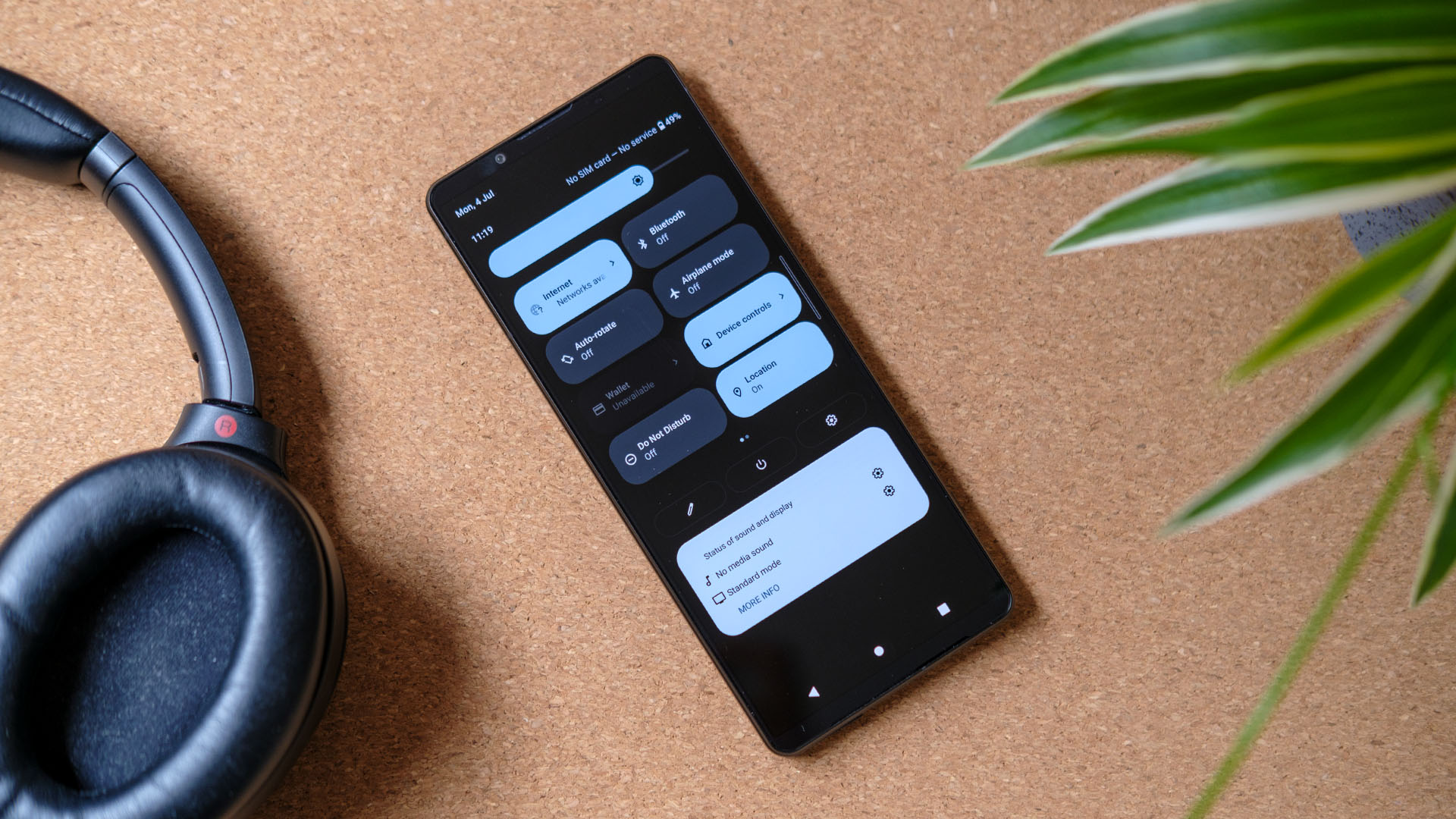
- Android 12 (updated to Android 13)
- Xperia UI
- Two years of OS updates, three years of security updates
Sony keeps it simple in the software department — arguably too simple. Xperia UI is a stock Android-like experience with Android’s bubbly, curvy notification shade and minimalist settings menu. The Xperia 1 IV doesn’t feature a number of Google’s Pixel-exclusive features but Sony packs a slew of display, battery, and audio toggles to help set the phone up just how you like it. Initially, Sony hadn’t implemented Material You‘s dynamic theming, but this is now integrated with the update to Android 13. Sony relies on a host of Google apps for basic services too, such as Photos for the gallery and Chrome as the default browser.
There are a few pre-installed apps that I could do without — including Amazon Shopping, Prime Video, Facebook, Netflix, TIDAL, LinkedIn, Booking.com, and YouTube Music. While most of these can be uninstalled, Facebook, LinkedIn, and TIDAL can only be disabled — not a very premium experience. Sony also bundles its Bravia Core application complete with one year of free content to stream, including the latest blockbuster movies. The only caveat is that you’re limited to five blockbuster releases, but can enjoy unlimited streaming of classic shows. This is the sort of cross-company Sony tie-in we’ve been longing for, but without the ability to subscribe, it’s not a substitute for other streaming services.
Sony’s mostly hands-off approach at the OS level allows the company to focus on its assorted “Pro” multimedia apps, and there have been some notable changes this generation.
For starters, Video Pro has a revamped interface (pictured below) that increases the size of the viewfinder and makes it much easier to access the important manual focus and lens zoom control. Unfortunately, there’s still a momentary skip when moving between the camera lenses but it’s improved on over last year. The app also includes new settings to configure live streaming to your YouTube channel or RTMP URL service, such as Twitch. Overall the app is much easier to use in general while the live streaming use case opens the door to a few more niche use cases.
Similarly, Sony’s Game Enhancer introduces live streaming support to the same services. It can also support customizable image layouts, chat, and sound settings for streaming. You can also record through your PC via USB-C, complete with separate channels for game and voice audio. Otherwise, the app still features the same game customization options, including performance settings, RAM release, audio EQ, brightness, and notification toggles.
Photo Pro and Video Pro (previous Cinematography Pro) are now joined by Music Pro — a music recording DAW of sorts. It’s a reasonably basic piece of kit, supporting up to 10 tracks, although Sony only recommends it for vocals and guitar. The app lacks essential features like volume mixing, panning, or any form of plugins — it’s a fancy recorder, really. Instead, the selling point is cloud-based automatic “studio tuning” that applies de-noise, de-verb, audio separation, and mic/studio simulation designed to emulate recording in a professional space. The app includes a rather limited 100MB free trial, which is enough for a track or two. There’s a basic plan that ups this to 1GB with additional 200MB chunks, but we don’t know the pricing and those allowances seem rather small. Although handy in a pinch, I doubt any serious musician will benefit from the limited nature of the app or expensive subscription price.
Sony's apps are better than ever, but it continues to neglect common quality-of-life OS features and the long-term support is found lacking for a phone that's this expensive.
Overall I’m positive but not completely sold on Sony’s software proposition. While the multimedia apps are better than ever, they’re increasingly focused on rather niche features when the phone could probably do with being friendlier to general consumers. How many customers are really going to stream their games? Although it’s fine to appeal to a niche, Sony is putting a lot of attention into features that consumers may never use while neglecting a few common quality-of-life OS features.
What isn’t fine, however, is Sony’s offer of only two years of OS updates and three years of security patches, which is below average for a phone this expensive. It’s certainly not as good as promises from Google and Samsung flagships, or even their budget devices. This just isn’t a great look for a phone that costs more than three times the asking price of phones like the Galaxy A54 5G and the Pixel 7a, both of which will still be getting security patches five years after launch. With brands like OPPO, vivo, and Xiaomi improving their long-term software support for flagship phones, Sony’s basic pledge doesn’t cut it anymore.
Sony Xperia 1 IV specs
| Sony Xperia 1 IV | |
|---|---|
Display | 6.5-inch OLED 21:9 aspect ratio 120Hz refresh rate (static) 3,840 x 1,644 resolution Gorilla Glass Victus covering |
Processor | Snapdragon 8 Gen 1 |
RAM | 12GB |
Storage | 256GB internal microSD card support |
Power | 5,000mAh battery 30W wired charging 15W wireless charging |
Cameras | Rear: - 12MP wide (ƒ1.7, 1/1.7-inch sensor, OIS, AF) - 12MP ultrawide (ƒ2.2, 1/2.5-inch sensor, AF) -12MP telephoto (ƒ2.3-ƒ2.8, Optical zoom at 85-125mm, 1/3.5-inch sensor, OIS, AF) Front: - 12MP wide (1/2.9-inch sensor) |
Video | 4K at 120fps front and rear 4K at 120fps slow-motion recording for all rear lenses |
Audio | Stereo speakers 3.5mm headphone jack |
Durability | IP65/68 Gorilla Glass Victus front and back |
Security | Side-mounted capacitive fingerprint sensor |
Software | Android 12 Xperia UI Two Android upgrades and three years of security patches |
Dimensions and weight | 165 x 71 x 8.2mm 185g |
Colors | Black, Ice White, purple |
Value and competition


The obvious talking point here is that the Xperia 1 IV is one of the most expensive phones on the market. Originally priced at $1,599, you probably did a spit-take well before reaching this part of the review. Even with a permanent discount down to $1,399, it’s still steeper than the Xperia 1 III and costs the same as the new Xperia 1 V.
US customers should almost certainly pick up the newer Xperia 1 V ($1398 at Amazon), given its improved specs, identical price point, and pre-order bundled goodies. Pre-orders ship at the end of July. Still, the hardware similarities keep this phone in contention in Europe and the UK, where the 1 IV discounts are as low as £999.
Alternatively, if you’re really keen on pro-level photography, the Xperia Pro-I ($59 at Amazon), which shares many of the same features (plus some extras) and can be found as low as $999. Sony fans should also take a look at the mid-range Xperia 5 IV ($998 at Amazon). It offers less overall, sports a smaller display with a lower resolution, less RAM, a smaller battery, and a weaker camera system. However, it’s a more reasonable buy due to its lower price tag.
Samsung’s premium Galaxy S23 Ultra ($1199.99 at Samsung) is one of the more noteworthy competitors. Boasting a competitive camera setup, faster performance, excellent display, wireless charging, and a host of other comparable features, the handset is an equally solid all-around purchase. It’s a no-brainer at hundreds of dollars less in the US, especially when you consider Samsung’s four OS and five-year security update pledge. Alternatively, for the same price as the Xperia 1 IV, you could get the top model Galaxy S23 Ultra with a whopping 1TB storage. Either way, it’s a far better long-term investment.
Feeling really exotic and really want to spend top dollar? The foldable Samsung Galaxy Z Fold 4 ($1180.25 at Amazon) and Google Pixel Fold ($1799 at Amazon) aren’t far off the Xperia 1 IV’s original launch price and offer genuine design innovation in the smartphone space.
If you’re happy with the Apple ecosystem, the iPhone 14 Pro Max ($999 at Amazon) offers a robust camera setup, videography-focused features, powerful and sustainable performance, and long-term updates. Of course, there’s much better value to be had out there too. Google’s Pixel 7 Pro ($530 at Amazon) might not have all the Xperia’s multimedia features, but its camera system gives Sony’s a run for its money at a fraction of the price, and it’ll receive security updates for five years too.
Sony Xperia 1 IV review: The verdict
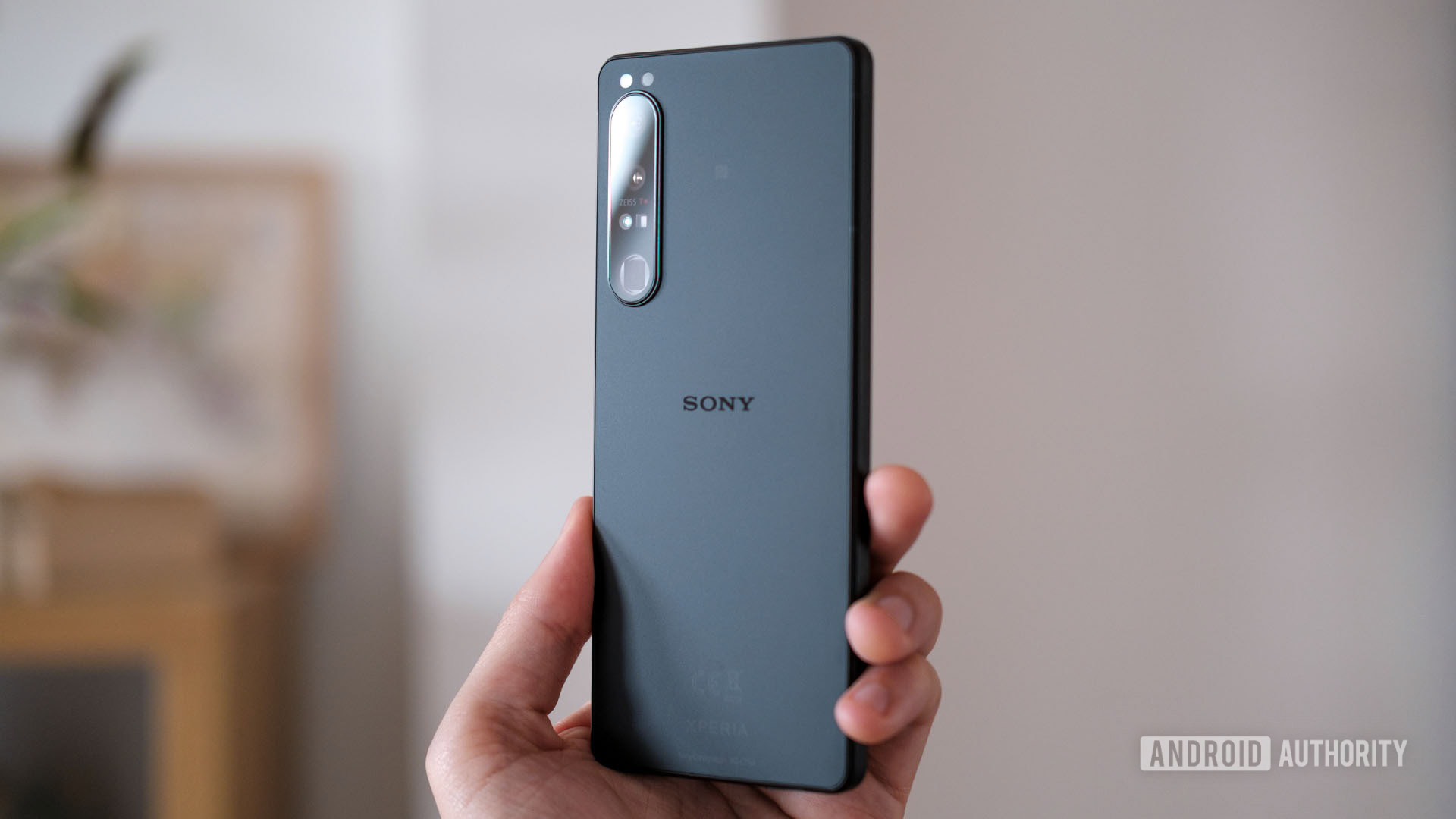
Is the Sony Xperia 1 IV a good phone? Absolutely. So should you buy it? Only if you’re after something very specific and are prepared to pay for it.
As we’ve come to expect from Sony, the Xperia 1 IV is a multimedia powerhouse — packed with sought-after audio and video features, bundled together in a lightweight software shell. 2022’s model leans heavily into the content creator angle in a bid to set itself apart from its predecessor. There are plenty of nice touches to its revamped apps that finally allow them to reach their potential, and a free year of Bravia Core is a positive sign of the sort of tie-ins Sony should be leveraging to add value. This is the best Xperia ever, but it’s only a small upgrade and the phone isn’t alone in vying for your hard-earned cash.
The Xperia 1 IV goes all-in to build the ultimate portable media capture and playback machine.
Sony clearly has a very specific target market in mind but focusing on a small user base leaves the broader package struggling against experiences available elsewhere. For instance, serious gamers will be left wanting by the lackluster sustained performance, the brand’s computational photography smarts still lag behind for quintessential point-and-shoot use cases, and Sony’s two OS/three-year security update pledge is not great. We’d expect at least another year of support, if not two, when paying top dollar.
In the end, the Sony Xperia 1 IV is even harder to justify than its already pricey predecessor. There are plenty of little quality-of-life improvements, from live streaming to camera eye-tracking and a variable focal length zoom, but they’re not fundamental enough to warrant yet another price increase — let alone such a sharp one in the US. You don’t have to be a Sony fan to appreciate this is a lovely phone, but given the Xperia 1 V is here for the same price, the 1 IV has had its day.
Top Sony Xperia 1 IV questions and answers
Yes, the Sony Xperia 1 IV has a microSD card slot for expanding the storage by up to 1TB beyond the base 256GB internal storage.
Yes, the Xperia 1 IV supports sub-6GHz networking globally and the US version will support mmWave 5G technology.
Yes, the Xperia 1 IV has an impressive camera setup. However, the camera hardware and software are geared more towards experienced photographers and less towards casual point-and-shoot use.
Yes. The Xperia 1 IV supports 15W Qi-compatible wireless charging.
The Sony Xperia 1 IV is priced at £1,299 in the UK, €1,399 in Europe, and a much steeper $1,599 in the US.
Yes, the Xperia 1 IV has support for eSIM and nano-SIM.